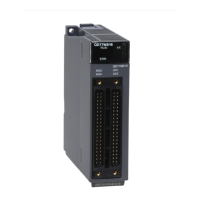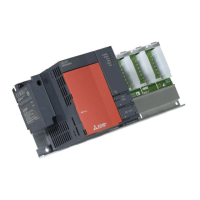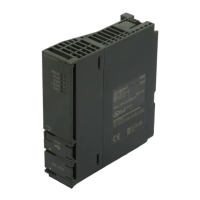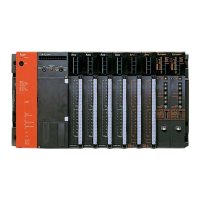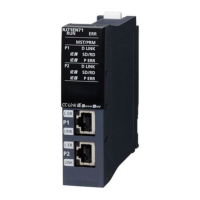3 CONFIGURATION OF INSTRUCTIONS
3.4 Indirect Specification
105
3
3.4 Indirect Specification
Indirect Specification
Indirect specification is a method that specifies address of the device to be used in a sequence program using two word
devices (two points of word device).
Use indirect specification as index modification when the index register is insufficient.
Specify the device to be used for specifying the address as "@ + (word device number)".
For example, when @D100 is specified, the device address will be the contents of D101 and D100.
When using the indirect specification, be sure to execute the ADRESET instruction.
For the ADRSET instruction, refer to Page 761 Indirect address read operations.
Indirect specification available devices
The following table shows that the CPU module devices can be specified indirectly.
*1 For the device names, refer to the User's Manual (Function Explanation, Program Fundamentals) for the CPU module used.
*2 Indirect specification is possible, but the address cannot be written with the ADRSET instruction.
Device type Availability of indirect
specification
Example of indirect
specification
Internal user device Bit device
*1
N/A
Word device
*1
Available • @D100
Link direct device Bit device
*1
N/A
Word device
*1
Available
*2
•@J1\W10
Intelligent function module device Available
*2
• @U10\G0
Index register N/A
File register Available • @R0, @ZR20000
Extended data register (D) Available • @D1000
• @W1000
Extended link register (W)
Nesting N/A
Pointer
Constant
Others SFC block device
SFC transition device
Network No. specification device
I/O No. specification device
MOV
ADRSET D100 D0
DMOV K50 W0
DMOV K10000 D150
D+
D0
W0 D10
DMOV
@D10 D110
K50 Z0
DMOV K10000 D150
DMOV D100Z0
Specification of
D (100 + 50) = D150
D110
[When index resister is used] [When indirect specification is used]
Specification of
address of D150
Store the address of
D100 in D0 and D1.
(Address of D100) + 50 =
(Address of D150)

